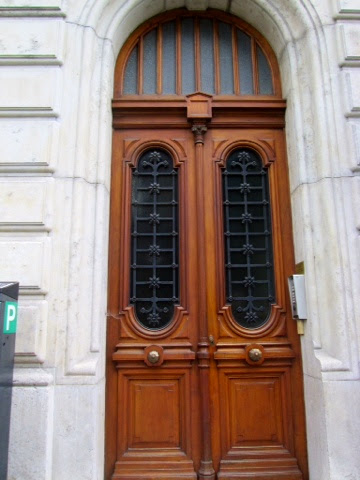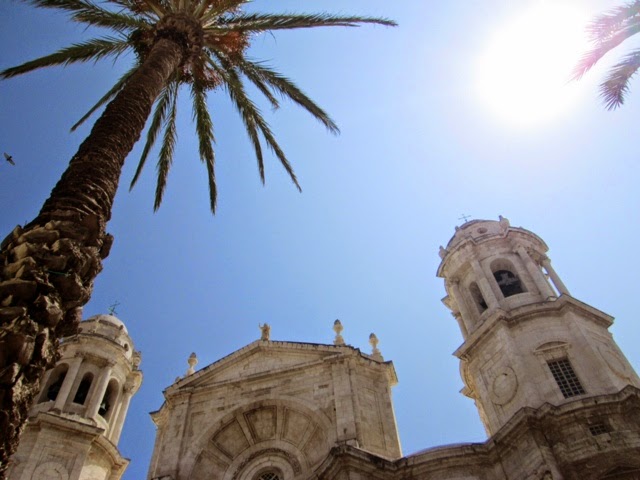Wednesday we took the ferry across the bay to Cadiz, which is known as the oldest continually habited city in Europe. It is surrounded almost completely by water and Christopher Columbus set sail from the port of Cadiz for some of his voyages. The city is built on a sandspit and is packed with narrow street; Cadiz is one of the most densely populated cities in Europe.
The ferry ride over :
Getting closer to the city

We went to a restaurant named El Aljibe for lunch and it was great! Some authentic Spanish food. One of the items on the menu was squid served in its own ink.
Next, we went to the top of the tallest tower at the highest point of the city, Torre Tavira.
There was a 3D "camera obscura" at the top. The "camara obscura" is an apparatus designed to reflect light through mirrors down onto a white circular plate that shows a panorama of a any given section of the city in real-time. The device can rotate and zoom in. Our tour guide gave us a brief tour of the city through this mirror system and playfully spied on people walking on the streets near the end.
The camera on top of the tower
We walked out to a little fort on a peninsula from the greater part of Cadiz.
So many of the doorways of Cadiz were tiled like this.
Friday off we went to Ronda... Or so we thought. We took a drive with Shandy and Chris in their car through the "white" towns of Andalucia.
Spain is so arid! France's countryside is full of windflowers and other vegetation, while Spain has cacti along the road.
The mountains and trees were so different looking from France.
On our way to Ronda, we passed through Bornos, Villamartin, Algodonales, and Zahara de la Sierra.
This is where the trouble began. Around 1h 45 minutes away from Shandy's home in El Puerto, near the town of Montecorto, the car's acceleration cable snapped. We somehow were right near a restaurant/shop. This restaurant had meat hanging on the walls and sold canned food in dispensers for a euro. We were so lucky that the car broke right there, because we could've had to walk miles to find any sort of civilization.
Where we broke down
We waited for Shandy and Chris' friend to buy the car part and drive all the way from El puerto to fix the car. It took about 5 hours. Ty and I played "20 questions" and with a bouncy ball to pass the time.
At about hour 4 I went for a walk on a side road near some horses.
It was so beautiful that I figured out the self timer on my camera to take a shot
This was my favorite shot. The contrast of the yellow flowers next to this scary thornbush.
Finally, their friend showed up! He had driven Shandy's car, which, ironically enough, has the check engine light on. He said he'd fix up the recently broken car and to take that one to Ronda. So finally we were on on our way!
Ronda is definitely one of my favorite places in Spain so far. It was worth all the hassle! Ronda is located on the side of a cliff. There is an amazing bridge that connects two plateaus that lay the gigantic foundations upon which the city lies. The views of the gorge beneath the bridge were breathtaking.
We first went to the bullfighting ring and learned about the history and culture of Spain's bullfighting.
Next we hiked down into the gorge and went to the base of the bridge. This was the sign at the beginning warning us the "way" is in poor condition.
At one point, this was our pathway.
We climbed this ladder leading to nowhere.
On the way home we passed through some more white towns: Arcos de la Frontera and Grazelema.
Many towns in southern Spain, particularly in Andalucia, end in the name "de la Frontera" (such as Jerez de la Frontera). This ending originated during the Reconquista, when the border between the Christian and Muslim territory was always changing. Whenever the Christians advanced further south, they would add this ending to the towns close to the border to designate the "frontera" or the border/frontier.
Finally, we were home! We went to the local specialty restaurant for dinner. The name of the restaurant directly translated to English means "chicken in the dirt."
Spanish street art in a city called Rota















































































